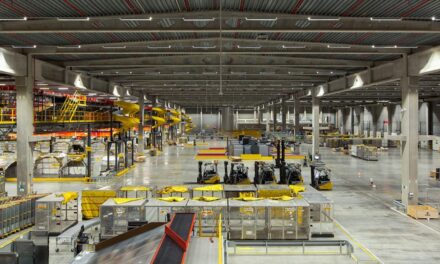
India primed for 3PL boom
India's economy is growing, and the logistics industry is growing along with it. A new study predicts that the nation's logistics market is expanding at a double-digit rate and will total USD125 billion by 2010.
The report by Datamonitor, a London market analysis firm, said the growth would be driven by India's economic strength and efforts to improve its transportation and port infrastructure. The country's gross domestic product is growing at more than 9 percent a year, and its manufacturing industries are growing at double-digit rates, the report said.
India's logistics market currently generates an estimated USD50 billion to USD90 billion in annual revenue, but third-party logistics providers have only a small share of that market. Craig Grossgart, India manager for DHL Express, said the 3PL market in India is only about USD500 million annually. In comparison, the total 3PL market in the U.S. is about USD104 billion, according to Armstrong & Associates. A&A also puts 3PL business from global Fortune 500 companies at USD158.1 billion for 2005.
India's 3PL market is expected to grow rapidly during the next several years, Datamonitor said. Besides economic expansion and infrastructure development, reasons include the recent repeal of the sales tax system and the increasing sophistication and reliability of logistics and e-commerce software.
"Strong growth enablers exist in India today in the form of more than USD300 billion worth of infrastructure investments, phased introduction of value-added tax, and development of organized retail and agri-processing industries," said Praveen Ojha, Datamonitor logistics analyst and author of the study. "In addition, strong foreign direct investment inflows in automotive, capital goods, electronics, retail and telecoms will lead to increased market opportunities for providers of 3PL in India."
India's underdeveloped and fragmented trade and transportation infrastructure inflates the nation's logistics costs, which are more than 13 percent of GDP, compared with less than 10 percent in nearly all of western Europe and North America.
"As leading manufacturers realign their global portfolios of manufacturing locations, India will have to work on such systemic inefficiencies in order to attract and retain long-term real investments," Ojha said.
Grossgart said more companies are relying on logistics service providers to trim costs and make manufacturing more efficient. "Outsourcing of logistics has been helping companies to meet stringent delivery schedules for shipping whatever they manufacture," he said.
Since 1979, DHL has been the No.1 international air express services provider in India, and since 2001, it has invested more than USD1.7 billion in the Asia-Pacific region.
India's 3PL market "is still at a nascent stage" but is growing by 18 percent a year, Grossgart said. "Clearly, the Indian industry has realized the need for the services of third-party logistics, and efforts are being made in that direction."
"Sectors such as automotive and IT hardware and electronics have seen a greater acceptance of 3PL, with the concept of end-to-end outsourcing becoming increasingly popular as companies realize its advantages," said Deepak Mohan, a research associate for Frost & Sullivan in a recent report. "In contrast, sectors such as pharmaceuticals and fast-moving consumer goods have a relatively low penetration of 3PL services due to strained profit margins."
Mohan said that like their counterparts in other countries, companies in India are outsourcing to 3PLs because they "have realized the importance of concentrating on their core competencies, leaving logistics to the experts."
The repeal of the sales tax system and the adoption of a uniform national value-added tax system likely will reorganize the existing decentralized distribution models into more centralized zones, he added. "This could result in the considerable growth of a number of large zonal warehousing hubs managed by 3PLs, facilitating efficient distribution of goods," Mohan said.
Datamonitor's report said India's logistics industry "is characterized by dominance of a disorganized market. Transporters with fleets smaller than five trucks account for more than two-thirds of the total trucks owned and operated in India and make up 80 percent of revenue. The freight forwarding segment is also represented by thousands of small customs brokers and clearing and forwarding agents, who cater to local cargo requirements."
Companies are seeking logistics services that go beyond transportation. "Trucking and courier companies are now leveraging their networks to provide express distribution and warehousing," Datamonitor said. "Similarly, freight forwarders are moving toward owning assets in the form of container freight stations, inland container depots and container trains."












